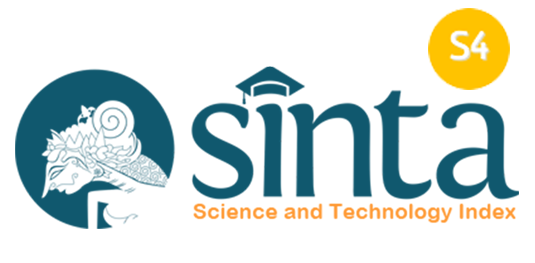Student's creativity through the guided discovery-based task to eliminate mathematics difficulties
Abstract
Keywords
References
DeDonno, M. A. (2016). The influence of IQ on pure discovery and guided discovery learning of a complex real-world task. Learning and Individual Differences, 49, 11–16. https://doi.org/10.1016/j.lindif.2016.05.023
Heidarie, A., Poor, S. B., & Poor, F. N. (2011). Effects and evaluation of creativity instructional methods on the creativity of students. In Life Science Journal (Vol. 8). Retrieved from http://www.lifesciencesite.comhttp//www.sciencepub.net/lifehttp://www.lifesciencesite.com.
Jordan, J. A., Wylie, J., & Mulhern, G. (2010). Phonological awareness and mathematical difficulty: A longitudinal perspective. British Journal of Developmental Psychology. https://doi.org/10.1348/026151010X485197
Kumalasari, A., Prihadini, R. O., & Putri, E. (2013). Kesulitan Belajar Matematika Siswa Ditinjau Dari Segi Kemampuan Koneksi Matematika. Seminar Nasional Matematika Dan Pendidikan Matematika, (November), MP-7-14.
Moma, L. (2015). Pengembangan Instrumen Kemampuan Berpikir Kreatif Matematis untuk Siswa SMP. Jurnal Matematika Dan Pendidikan Matematika, 4(1), 27–41.
Mulyasa, E. (2004). Implementasi Kurikulum 2004 panduan pembelajaran KBK. Bandung: Remaja Rosdakarya.
Munandar, U. (2009). Kreatifitas Pengembangan Anak Berbakat. Jakarta: Rineka Cipta.
Overholser, J. C. (2013). Guided discovery: Problem-solving therapy integrated within the Socratic method. Journal of Contemporary Psychotherapy, 43(2), 73–82. https://doi.org/10.1007/s10879-012-9229-1
Rahmi, Y. L., Novriyanti, E., Ardi, A., & Rifandi, R. (2018). Developing Guided Inquiry-Based Student Lab Worksheet for Laboratory Knowledge Course. IOP Conf. Series: Materials Science and Engineering, 1–6. https://doi.org/10.1088/1757-899X/335/1/012082
DOI: https://doi.org/10.18860/ijtlm.v5i2.9416
Refbacks
- There are currently no refbacks.
Copyright (c) 2023 International Journal on Teaching and Learning Mathematics

This work is licensed under a Creative Commons Attribution-NonCommercial-ShareAlike 4.0 International License.
Indexed by :
.png)
.jpg)
.png)

.jpg)



